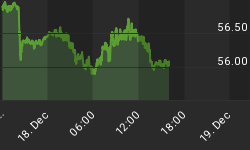The Fed is holding rates steady, while Europe might increase its quantitative easing program. What will happen to the EUR/USD?
As expected, the United States Federal Reserve decided to adopt a wait-and-see approach to rates on September 17. The Fed postponed all decisions to future meetings because it needs more time to assess global economic turbulence and increased volatility in U.S. stock markets. No nation appears to be immune from the latest economic reshuffle, despite good GDP numbers reported in the U.S. On Thursday, during a speech Thursday in Amherst, Massachusetts, Fed Chair Janet Yellen confirmed that the institution remains on track to rise rates by the end of this year.
When will be a good time? December 2015, three months after the September meeting, could present a good opportunity for the Fed to review its decision. It might be clearer then whether we are experiencing a deep economic contraction or merely a mild slowdown. Under normal circumstances, with an unemployment rate around 5.0%, rates would already have been increased. However, we are not living in normal times. The U.S. economy is still performing below full capacity, inflation is extremely low, and labor force participation remains weak. On the other hand, postponing a rate hike will increase incertitude, creating a false sense of complacency among financial institutions and players.
For example, some U.S. financial brokers have high leverage for private bond allocations. Globally, the prolonged zero-interest policy has prompted foreign companies to increase their exposure to the U.S. dollar, perhaps without much consideration of the increased exchange rate risks. As the U.S. rate hike has been postponed, the European Central Bank (ECB) might be requested to expand its quantitative easing program when it meets in December a few days before the Fed. Economic growth in Europe fell to 0.3% in Q2 2015 from 0.4% in the previous quarter. Will the ECB expand its program? Only time will tell. In the meantime, expectations of an increased rate spread differential between the U.S. and Europe should further support the U.S. dollar and penalize the euro. As a result, the EUR/USD could decline to 1.0970/1.0810 over the short term.















